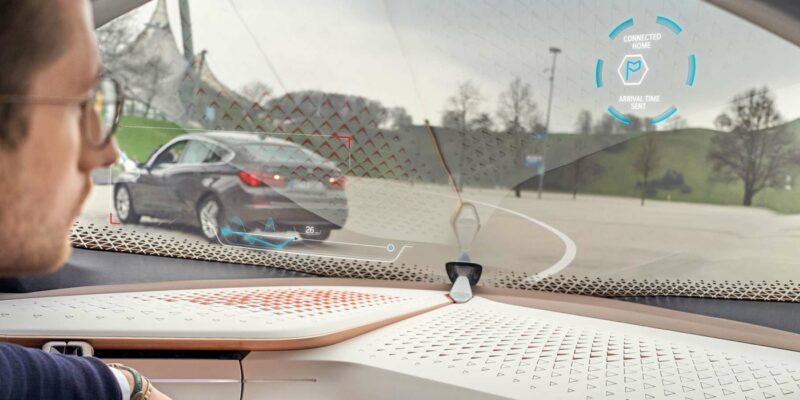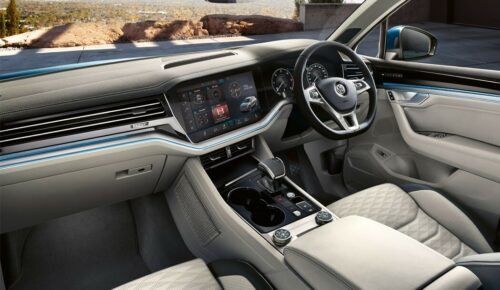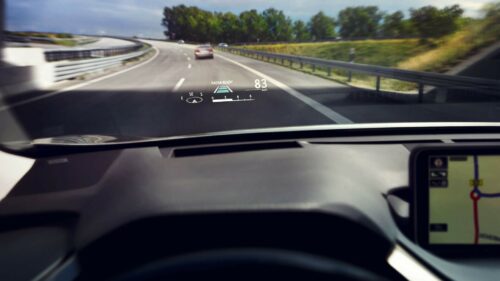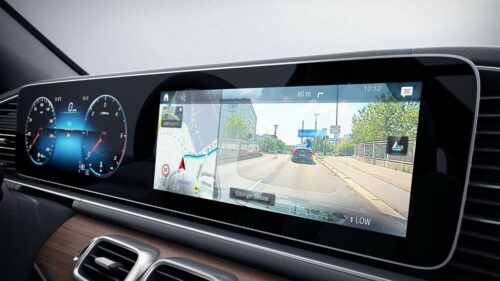
The evolution of driving seat technology has changed dramatically in the last few years.
While the introduction of Head-up Display (HUD) may still seem like a futuristic innovation, HUDs are now available across various models – bringing a virtual experience to your everyday driving.
Don’t get left behind: read of guide to HUDs and get familiar with the car models making augmented reality the norm.
Your Guide To Head-up Displays
What is HUD?
HUDs use augmented reality (AR) to project segments of useful driving information onto the windscreen ahead, meaning the driver doesn’t have to glance at the dashboard when driving for driving information, keeping their eyes and concentration firmly on the road ahead.
Originally used in military aviation, you might say HUD technology has been in the waiting wings for a long time - finally being released into the automotive world of more mainstream interior cars in recent years.
How does HUD work?
HUD technology provides visual driving alerts, speed, navigation directions and road warnings such as congestions into the driver’s line of sight.
It works by projecting a floating image of virtual road markings and data onto the road ahead. A small box positioned above the dash, projects a reversed image onto the windscreen, which is then reflected back into the driver’s eye line.
While modern infotainment screens can be an impressive 10inch HD monitor positioned in the centre of the dash, they still require the driver to take their eyes off the road. Whereas HUDs ultimately make driving a much safer and easier experience, removing the need for the driver to look away from their usual viewpoint.
Which cars have head-up display?
If you are in the market for a new car you may have noticed that HUDs are available of the specification list.
First introduced on more premium models, head-up displays are trickling down to more popular cars – meaning you will find HUDs available in everything from a MINI to a Jaguar XF.
Here are 7 of the best cars with HUD technology.
- MINI Hatch
- VW Tousreg
- BMW 5Series
- Audi A8
- Lxus RX
- Mercedes-Benz A Class
- Jaguar XF
MINI Hatch
Available for installation in almost all MINI models, the MINI HUD is a small device sits on the dashboard, above the steering wheel. It projects a variety of information into the eye line of the driver, fully controllable through the MINI iDrive Controller, including the speed that the vehicle is travelling, navigation and warning signals. The display will even alert a driver when a passenger or animal is in the path of the vehicle.
The HUD provides drivers with a fantastic degree of flexibility, and can also be synced with smartphones and project information from the phone onto the display.
VW Touareg

Volkswagen’s Touareg boasts an interactive digital display and control system – complete with a head-up display that projects a virtual rundown of key driving information into the driver’s field of vision.
Projected onto the windscreen, at 217 mm in width and 88 mm in height, it is the largest HUD offered by Volkswagen. The position of the HUD can be personalised to suit the driver, as well as be set to display individual preferences such as speed, warnings, traffic sign recognition and navigation guidance.
BMW 5 Series
Available on the BMW 5 Series, the BMW full-colour HUD shows speed information, navigation instructions, driver assistance warnings and speed limits – making this one of the best HUD systems available. Several BMW models now offer a HUD (2016 production or later).
Audi A8
It is fair to say the latest Audi A8 is one of the most tech advanced cars on the market. Boasting a MIMI infotainment system, a writing pad, a HUD – as well as a myriad of sensors, 360 degree camera and over 40 driver assist options – you won’t be disappointed by the finely tuned A8 tech capabilities
Lexus RX

The luxury Lexus RX SUV is a new introduction form Lexus, complete with extra-wide head-up display. Projected directly onto the screen, at 240m wide and 240mm wide and 90mm high, it is the largest HUD from Lexus. Feeding you live driver information; including speed, navigation commands and audio settings – in colour, where you want it, without taking your eyes off the road.
Mercedes-Benz A Class

Similar to HUD, the latest Mercedes A-Class offers a unique AR navigation system, which seamlessly overlays live real world camera images with VR graphics and traffic information. The result is a wonderfully rich camera view of your upcoming journey, enabling you to find your way in complex traffic situations with ease.
Jaguar XF
The Jaguar XF uses advanced laser technology to project images onto the windscreen, yet remains viewable in even direct sunlight, showing a selection of traffic sign recognition data, alongside navigation and speed instructions.
Jaguar Land Rover have also recently announced that they are now exploring 3D HUD and infotainment projections. In collaboration with the University of Cambridge, concepts for a 3D head-up display that projects information on the road ahead of the car, as oppose to in front of the driver’s line of sight, is in development. This supports Land Rover’s commitment to preventing the risk of accidents by reducing driver distraction, as the new technology aims to be even less distracting for the driver.
The development of HUD technology across more and more vehicles makes for safer roads in the UK – while it is also a matter of time before 3D technology is set to take things to the next level for HUD innovation.





